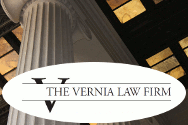by Ben Vernia | May 16th, 2011
On May 16, the Supreme Court issued its ruling in Schindler Elev. Corp. v U.S. ex rel. Kirk, and held that for purposes of the now-amended public disclosure bar, documents produced in response to a FOIA request constitute a “report” that can trigger the defense. The case was decided along familiar lines, with the Chief Justice and Justices Scalia, Kennedy, and Alito joining in the Court’s opinion written by Justice Thomas; Justice Ginsburg wrote a dissent in which Justices Breyer and Sotomayor joined (Justice Kagan had recused herself).
The case was brought by a whistleblower against his former employer, who alleged in an amended complaint that the company had filed false claims under its government contracts because the company had either failed to file, or had filed false veteran employment certifications, evidence of which the relator’s wife had obtained through a FOIA request. The company moved to dismiss on public disclosure grounds. The district court granted the motion, but the Second Circuit reversed, reasoning that an agency’s response to a FOIA request is neither a report nor an investigation sufficient to trigger the public disclosure bar.
The Supreme Court reversed, first relying on a “broad ordinary meaning” of “report” as something that provides information or notification, and concluding that the other terms in the public disclosure bar (including “news media”) suggested a broad sweep. The Court stated that there was no textual basis for a narrower reading, reasoning that the Second Circuit – as the Fourth Circuit had in Graham County – applied the noscitur a sociis (Latin for “to be known by one’s neighbors”) only to the surrounding words of the provision to the exclusion of the rest of the statute.
Applying this standard to FOIA reports, the Court concluded that they met the definition of “report” under the Act, noting that agency responses are typically in writing and provide information, and the Court wrote that the individual documents could not be “disaggregated” from the entire FOIA report. Finally, the Court stated that the public disclosure bar’s legislative history did not contradict its reading of the text, and it stated:
The sort of case that Kirk has brought seems to us a classic example of the “opportunistic” litigation that the public disclosure bar is designed to discourage.
The Court also did not find any inherent contradiction in the possibility that a relator who based a qui tam on documents disclosed through FOIA but not attached to a written FOIA report – a question it said it was not deciding – could survive the public disclosure bar, while a relator basing his or her complaint on a document attached to a written FOIA report could not: “we are not troubled by the different treatment. By its plain terms, the public disclosure bar applies to some methods of public disclosure and not to others.”
The Court also found illusory the potential danger of a defendant insulating itself from liability by issuing a FOIA request for incriminating documents, because it suggested (without deciding) that a relator who obtained the documents from another source might have a valid claim notwithstanding the public disclosure through FOIA.
The Court returned the case to the Second Circuit to determine if it was “based upon . . . allegations or transactions” disclosed in the FOIA reports.
Justice Ginsburg, writing for the dissenters, lauded the Second Circuit’s decision as a “carefully developed, highly persuasive opinion,” and criticized the Court for disregarding the Court of Appeals’ consideration of the text and context of the public disclosure bar. Justice Ginsburg also refuted the Court’s conclusion that the whistleblower’s case was opportunistic, and, in an unusual plea for Congressional action, noted the difficulty confronting whistleblowers:
Why should a whistleblower attentive to the heightened pleading standards of Federal Rule of Civil Procedure 9(b) be barred from court if he seeks corroboration for his allegations, as Kirk did, through a FOIA request simply for copies of a contractor’s filings? After today’s decision, which severely limits whistleblower’s ability to substantiate their allegations before commencing suit, that question is worthy of Congress’ attention.
Comment: The Court noted in a footnote that the Patient Protection and Affordable Care Act of 2010 (i.e., health care reform) amended the public disclosure bar. Though the case may seem to have limited impact on cases filed after March, 2010, Justice Ginsburg’s call for Congressional action demonstrates that the real battleground lies elsewhere: she highlights the Court’s hostility to declined qui tam suits, and in reference to Fed. R. Civ. P. 9(b) hints that the Court’s majority will next turn its sights on that provision as a tool to combat what it views as “opportunistic” litigation. In light of the Supreme Court’s dramatic reshaping of Rule 8, in the Iqbal and Twombly decisions, her warning seems well-founded.

